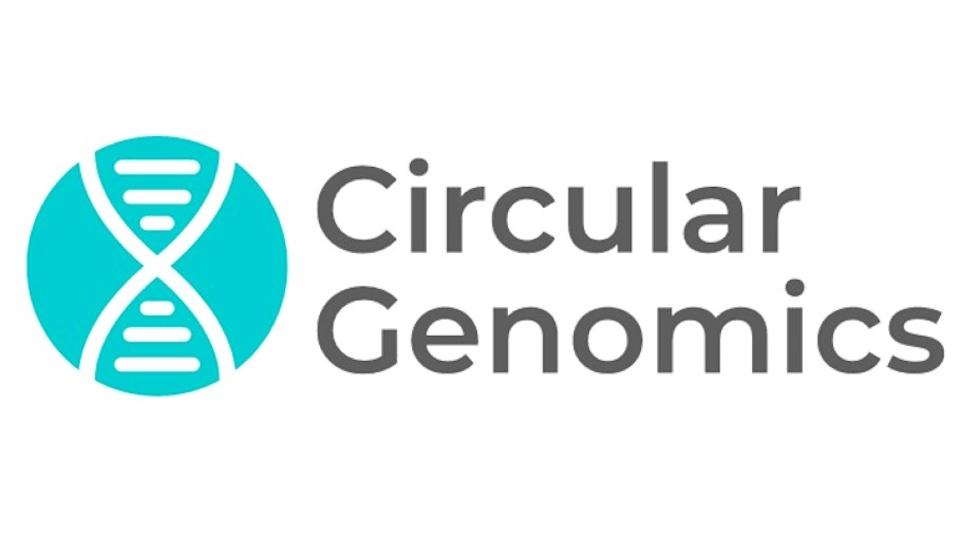Real life challenges in setting up a non-profit organisation

Having helped to set up the Global Health Education Foundation, Faiz Kermani shares with us the difficulties in setting up a non-profit organisation.
According to the World Health Organization, at least 1.3 billion people worldwide lack access to the most basic healthcare, with this burden being greatest in countries overwhelmed by poverty . Unfortunately, the health disparities between poor and rich countries continue to grow. While disease itself represents a tremendous threat to people in developing regions, the lack of appropriate educational resources and training opportunities for health professionals can also be one of the barriers in many nations to improving healthcare quality.
The mission of the Global Health Education Foundation (GHEF) is to provide medical education and medical research efforts, particularly in the field of infectious diseases, to promote healthcare advances in developing countries. In May 2010, GHEF was granted 501(c)(3) status from the US Internal Revenue Service, which allowed it to officially function as a non-profit organisation.
All GHEF staff are non-salaried volunteers. GHEF’s volunteer staff have been selected based on their commitment to the organisation’s basic ideals, their scientific and medical areas of expertise, their network of contacts in the academic and commercial areas of medicine, and their knowledge of healthcare in developing countries.
Humble beginnings
The story of GHEF started about four years earlier in Salt Lake City, Utah where two friends Dr John Mei and Dr Mansoor Ahmed met over dinner following a Sleep Medicine event. During their conversation, Dr Ahmed casually shared his experience of an educational programme that he had helped initiate. Knowing John’s interest in medical education, he remarked how using just a “little bit of creativity, minimum expenses and well-directed effort” these types of educational training programmes could make big difference at improving healthcare.
The programme featured participation from a number of notable US academic institutes such as Harvard, Stanford and Penn State. The aim of the programme had been to provide training to international physicians so that they could start improving the underserved sleep healthcare in their respective countries. What Dr Ahmed had concluded was that the training model could be applied to almost any medical speciality, provided that it was set up and organised in the right way.
"...the lack of appropriate educational resources and training opportunities for health professionals can also be one of the barriers in many nations to improving healthcare quality."
Various other instructional instruments could also be of value in disseminating heath care knowledge and skills to healthcare providers. Having a ‘train the trainer’ element was important for projects so that any learnings could be rapidly rolled out to others, who could further expand the educational process in distant regions. In developing these projects, it was also important not to neglect other healthcare professionals, such as nurses and pharmacists, since these individuals will have a huge impact on patient education and subsequent healthcare out-comes.
For John, this discussion was just the sort of motivation he had been looking for. He had long dreamed of setting up a non-profit educational initiative that could tackle some of the healthcare disparities that existed in developing countries. At the time, he was working as a medical liaison in a large pharmaceutical company, which brought him into contact with a variety of individuals, both in the industry and academic medicine, who had strong opinions on how to tackle healthcare disparities around the world. It was a pleasant surprise to see that many believed there was a moral obligation to improve the current situation. Some contacts had personal experience of working with organisations such as Doctors Without Borders/Médecins Sans Frontières and gave him insight into how they provided aid around the world.
What he realised from his various discussions, was that while there were many worthy organisations providing medical assistance internationally to those in need, there appeared to be a gap in providing medical education to specialists who worked in these regions. In a sense this was summed up by the proverb “Give a man a fish and you feed him for a day, teach a man to fish and you feed him for a lifetime.” Coming originally from China, John had seen for himself the dedication of local physicians and other healthcare professionals and how additional knowledge and cutting edge training might help them better fulfill their role in serving patients. In addition, he knew Chinese physicians who had returned from training abroad to start their own non-profit initiatives to tackle healthcare problems in China.
Based on their initial discussions, he and Dr Ahmed worked up some ideas on how the Global Health Education Foundation (GHEF) might develop and laid down some basic guidelines for its objectives. They then set about talking to others they knew to help get the initiative off the ground and fulfill the necessary legal steps for it to function as a non-profit organisation.
Given the huge impact of malaria and HIV/AIDS in many developing world regions, it was felt that GHEF should focus its medical education and medical research efforts in the field of infectious diseases. Coincidentally, it has also proven to be the area where those now involved in GHEF have a number of excellent and enthusiastic contacts.
Administrative challenges
John was eventually able to convene a board to form the core of GHEF. These individuals had the necessary medical and scientific expertise to help GHEF achieve its educational objectives. However, many of them were busy individuals and could not commit their time until the project was officially off the ground and had the required legal status. In the area of non-profit work it is essential that any organisation has the necessary legal standing before it commences any activities. This helps protect both the reputation of the organisation and the individuals willing to give their time.
"In the area of non-profit work it is essential that any organisation has the necessary legal standing before it commences any activities."
Since GHEF is US-based it was necessary to obtain 501(c)(3) status from the Internal Revenue Service (IRS) in order to be considered as a tax-exempt, non-profit corporation or association. The administrative effort to achieve 501(c)(3) status is immense, and meant that the initial focus for GHEF had to be on dealing with paperwork rather than complex, but more exciting, medical or scientific projects. Paying attention to these types of application processes is of course essential but the experience can be hugely frustrating and time-consuming – it is really not the glamorous side of the non-profit world!
Ironically, it was at this stage that I became involved in GHEF. A friend of mine knew John and put us in touch, since I also had an interest in healthcare in developing world regions. Since John had already gathered enough subject matter experts for GHEF, I decided that the area where I could contribute most at this stage would be in helping with the administrative parts of the application process.
At the time I was based in the UK and was working for a medical education company. A few years earlier I had tried to set up an education charity with some friends in the UK, but our application to the Charity Commission, which registers and regulates charities in England and Wales, had been rejected. This was hugely frustrating since we had spent several months in getting the paperwork in place, but when we scanned the rejection letter we found that the documents we had provided had not been enough. However, the experience would prove very valuable for the GHEF application, as I realised that when setting up a non-profit initiative there can be no shortcuts in getting the paperwork sorted. Without the necessary legal charity status being sorted out first, any outside commitments toward future collaborations and even funding are almost irrelevant.
The experience also demonstrated the scale of personal commitment required. After a day at work, it is not too thrilling to wade through pages of official forms! Dealing with the official requirements was already time-consuming due to what was required, but everything was made even more difficult due to team members not being available when needed or sufficiently motivated after a setback. In effect, what I learned was that a realistic step-by-step approach to paperwork was essential and that proceeding slowly was not necessarily a bad thing!
Fortunately for me, John was of a similar opinion and he convinced me that he would be willing to share in the frustration of the administrative side in exchange for my involvement. Since I was based in the UK, most of our exchanges were via email and subject to the trans-Atlantic time difference, but this all changed when I obtained a job transfer to the US to work in Princeton, New Jersey. As John was located less than two hours away in Connecticut, discussions with him became a lot easier and we finally started to make progress.
"Paying attention to these types of application processes is of course essential but the experience can be hugely frustrating and time-consuming."
Our first challenge was to fill out Form 1023 (Application for Recognition of Exemption Under Section 501(c)(3) of the Internal Revenue Code). We soon found that trying to fill out this 28-page form through occasional emails, phonecalls or skype was an ineffective approach that just gave us headaches. A lot of the form consists of tick box options which categorise your organisation, but for non-specialists the administrative language used by the IRS is very complex and the guidance on their website for the choices takes time to digest. Meeting face to face one weekend helped us in decipher the logic of the form but the lengthy decision-making over various line items was mentally draining!
Over the next few weeks we sorted out myriad remaining supporting documents, including the all important organisational document, in line with IRS rules. In all, there were over 20 documents in the bulky application that went to the IRS. Apart from the paperwork we also had to deal with tasks such as creating a website and developing an organisational logo and branding. When you have no funds at your disposal it is amazing how creative you can be and the individuals who you can find to help you out in areas that are not your specialist fields.
It was a huge relief when we had everything in place to finally send our application to the IRS. However, we were soon brought back down to earth when the forms were returned with a list of questions regarding various line items and our organisational document, as well as a request for additional document. We carried out what we felt were the necessary revisions, but once again we received a request to clarify other parts of the application. Over the next year this process repeated itself many times over, but somehow we were able to respond in time to the deadlines for clarification and not lose heart. When GHEF received 501(c)(3) approval in May 2010 it was a huge morale boost – and a reward for being patient and persistent.
Next steps
Just after the 501(c)(3) approval was achieved, John was invited by some contacts to visit Tanzania. He had been in discussions with potential research collaborators for a couple of years and the invite came at a time when we had some good news to share.
In Dar es Salaam, he had opportunity to meet with many medical community leaders, including Professor and Vice-Chancellor, Keto Mshigeni at the Hubert Kairuki Memorial University, and five Presidential Advisors at the Presidential Palace.
Upon John’s return GHEF had its first official board meeting via teleconference. With the board members scattered around the US, China and Europe this made for an interesting challenge in arranging a time that suited everyone. Nevertheless it was a good opportunity for everyone to introduce themselves and go over some of the ideas that formed the core of the 501(c)(3) application. This means that for the moment, the administrative side continues to dominate GHEF, as it is necessary to evaluate newly proposed projects and document them so that the organisation remains compliant with IRS regulations.
Considering that four years ago GHEF only represented a topic for a dinner conversation, everyone is willing to be patient before we get our first projects off the ground. After all, good things are supposed to come to those who wait!
About the author:
Faiz Kermani is an independent consultant with experience in the US and UK and President of the Global Health Education Foundation. At some time or another he has found himself in discovery R&D, international clinical trials, pharmaceutical pricing and reimbursement, and medical communications. This jack of all trades history causes him to attempt articles that look at the big picture for the global pharmaceutical industry. He can be contacted at faiz.kermani@globalhef.org.
Can pharma better support setup of non-profit organisations?











